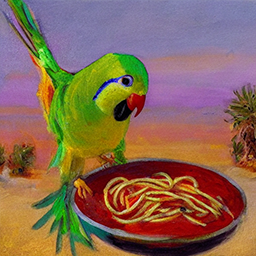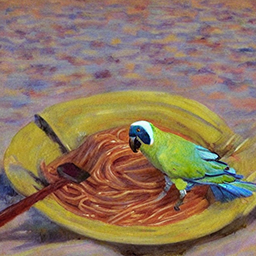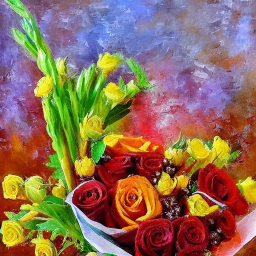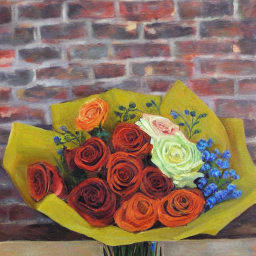Spaces:
Runtime error
Runtime error
File size: 9,843 Bytes
7febc8f 1659e0c |
1 2 3 4 5 6 7 8 9 10 11 12 13 14 15 16 17 18 19 20 21 22 23 24 25 26 27 28 29 30 31 32 33 34 35 36 37 38 39 40 41 42 43 44 45 46 47 48 49 50 51 52 53 54 55 56 57 58 59 60 61 62 63 64 65 66 67 68 69 70 71 72 73 74 75 76 77 78 79 80 81 82 83 84 85 86 87 88 89 90 91 92 93 94 95 96 97 98 99 100 101 102 103 104 105 106 107 108 109 110 111 112 113 114 115 116 117 118 119 120 121 122 123 124 125 126 127 128 129 130 131 132 133 134 135 136 137 138 139 140 141 142 143 144 145 146 147 148 149 150 151 152 153 154 155 156 157 158 159 160 161 162 163 164 165 166 167 168 169 170 171 172 173 174 175 176 177 178 179 180 181 182 183 184 185 186 187 188 189 190 191 192 193 194 195 196 197 198 199 200 201 202 203 204 205 206 207 208 209 210 211 212 213 214 215 216 217 218 219 220 221 222 223 224 225 226 227 228 229 230 231 232 233 234 235 236 237 238 239 240 241 242 243 244 245 246 247 248 249 250 251 252 253 254 255 256 257 258 259 260 261 262 263 264 265 266 267 268 |
---
title: sdui
emoji: 🐢
colorFrom: blue
colorTo: red
sdk: docker
pinned: false
duplicated_from: atikur-rabbi/sdui
---
# Stable Diffusion in Docker
Run the official [Stable Diffusion](https://huggingface.co/CompVis/stable-diffusion)
releases on [Huggingface](https://huggingface.co/) in a GPU accelerated Docker
container.
```sh
./build.sh run 'An impressionist painting of a parakeet eating spaghetti in the desert'
```


```sh
./build.sh run --image parakeet_eating_spaghetti.png --strength 0.6 'Bouquet of roses'
```


## Before you start
### Minimum requirements
By default, the pipeline uses the full model and weights which requires a CUDA
capable GPU with 8GB+ of VRAM. It should take a few seconds to create one image.
On less powerful GPUs you may need to modify some of the options; see the
[Examples](#examples) section for more details. If you lack a suitable GPU you
can set the options `--device cpu` and `--onnx` instead.
### Huggingface token
Since it uses the official model, you will need to create a [user access token](https://huggingface.co/docs/hub/security-tokens)
in your [Huggingface account](https://huggingface.co/settings/tokens). Save the
user access token in a file called `token.txt` and make sure it is available
when building the container. The token content should begin with `hf_...`
## Quickstart
The pipeline is managed using a single [`build.sh`](build.sh) script.
Pull the latest version of `stable-diffusion-docker` using `./build.sh pull`.
You will need to use the option `--token` to specify a valid [user access token](#huggingface-token)
when using [`./build run`](#run).
Alternately, build the image locally before running it.
## Build
Make sure your [user access token](#huggingface-token) is saved in a file called
`token.txt`.
To build:
```sh
./build.sh build # or just ./build.sh
```
## Run
### Text-to-Image (`txt2img`)
Create an image from a text prompt.
To run:
```sh
./build.sh run 'Andromeda galaxy in a bottle'
```
### Image-to-Image (`img2img`)
Create an image from an existing image and a text prompt.
First, copy an image to the `input` folder. Next, to run:
```sh
./build.sh run --image image.png 'Andromeda galaxy in a bottle'
```
### Depth-Guided Diffusion (`depth2img`)
Modify an existing image with its depth map and a text prompt.
First, copy an image to the `input` folder. Next, to run:
```sh
./build.sh run --model 'stabilityai/stable-diffusion-2-depth' \
--image image.png 'A detailed description of the objects to change'
```
### Instruct Pix2Pix (`pix2pix`)
Modify an existing image with a text prompt.
First, copy an image to the `input` folder. Next, to run:
```sh
./build.sh run --model 'timbrooks/instruct-pix2pix' \
--image image.png 'A detailed description of the objects to change'
```
### Image Upscaling (`upscale4x`)
Create a high resolution image from an existing image with a text prompt.
First, copy an image to the `input` folder. Next, to run:
```sh
./build.sh run --model 'stabilityai/stable-diffusion-x4-upscaler' \
--image image.png 'Andromeda galaxy in a bottle'
```
### Diffusion Inpainting (`inpaint`)
Modify specific areas of an existing image with an image mask and a text prompt.
First, copy an image and an image mask to the `input` folder. White areas of the
mask will be diffused and black areas will be kept untouched. Next, to run:
```sh
./build.sh run --model 'runwayml/stable-diffusion-inpainting' \
--image image.png --mask mask.png 'Andromeda galaxy in a bottle'
```
## Options
The following are the most common options:
* `--prompt [PROMPT]`: the prompt to render into an image
* `--model [MODEL]`: the model used to render images (default is
`CompVis/stable-diffusion-v1-4`)
* `--height [HEIGHT]`: image height in pixels (default 512, must be divisible by 64)
* `--width [WIDTH]`: image width in pixels (default 512, must be divisible by 64)
* `--iters [ITERS]`: number of times to run pipeline (default 1)
* `--samples [SAMPLES]`: number of images to create per run (default 1)
* `--scale [SCALE]`: how closely the image should follow the prompt (default 7.5)
* `--scheduler [SCHEDULER]`: override the scheduler used to denoise the image
(default `None`)
* `--seed [SEED]`: RNG seed for repeatability (default is a random seed)
* `--steps [STEPS]`: number of sampling steps (default 50)
Other options:
* `--attention-slicing`: use less memory but decrease inference speed (default
is no attention slicing)
* `--device [DEVICE]`: the cpu or cuda device to use to render images (default
`cuda`)
* `--half`: use float16 tensors instead of float32 (default `float32`)
* `--image [IMAGE]`: the input image to use for image-to-image diffusion
(default `None`)
* `--image-scale [IMAGE_SCALE]`: how closely the image should follow the
original image (default `None`)
* `--mask [MASK]`: the input mask to use for diffusion inpainting (default
`None`)
* `--negative-prompt [NEGATIVE_PROMPT]`: the prompt to not render into an image
(default `None`)
* `--onnx`: use the onnx runtime for inference (default is off)
* `--skip`: skip safety checker (default is the safety checker is on)
* `--strength [STRENGTH]`: diffusion strength to apply to the input image
(default 0.75)
* `--token [TOKEN]`: specify a Huggingface user access token at the command line
instead of reading it from a file (default is a file)
* `--vae-tiling`: use less memory when generating ultra-high resolution images
but massively decrease inference speed (default is no tiling)
* `--xformers-memory-efficient-attention`: use less memory but require the
xformers library (default is that xformers is not required)
Some of the original `txt2img.py` options [have been renamed](https://github.com/fboulnois/stable-diffusion-docker/issues/49)
for easy-of-use and compatibility with other pipelines:
| txt2img | stable-diffusion-docker |
|---------|-------------------------|
| `--H` | `--height` |
| `--W` | `--width` |
| `--n_iter` | `--iters` |
| `--n_samples` | `--samples` |
| `--ddim_steps` | `--steps` |
## Examples
These commands are both identical:
```sh
./build.sh run 'abstract art'
./build.sh run --prompt 'abstract art'
```
Set the seed to 42:
```sh
./build.sh run --seed 42 'abstract art'
```
Options can be combined:
```sh
./build.sh run --scale 7.0 --seed 42 'abstract art'
```
Many popular models are supported out-of-the-box:
| Model Name | Option using `--model` |
|------------|------------------------|
| [Stable Diffusion 1.4](https://huggingface.co/CompVis/stable-diffusion-v1-4) | `'CompVis/stable-diffusion-v1-4'` |
| [Stable Diffusion 1.5](https://huggingface.co/runwayml/stable-diffusion-v1-5) | `'runwayml/stable-diffusion-v1-5'` |
| [Stable Diffusion 2.0](https://huggingface.co/stabilityai/stable-diffusion-2) | `'stabilityai/stable-diffusion-2'` |
| [Stable Diffusion 2.1](https://huggingface.co/stabilityai/stable-diffusion-2-1) | `'stabilityai/stable-diffusion-2-1'` |
| [OpenJourney 1.0](https://huggingface.co/prompthero/openjourney) | `'prompthero/openjourney'` |
| [Dreamlike Diffusion 1.0](https://huggingface.co/dreamlike-art/dreamlike-diffusion-1.0) | `'dreamlike-art/dreamlike-diffusion-1.0'` |
| [and more!](https://huggingface.co/models?other=stable-diffusion&sort=likes) | ... |
```sh
./build.sh run --model 'prompthero/openjourney' --prompt 'abstract art'
```
On systems without enough GPU VRAM, you can try mixing and matching options:
* Give Docker Desktop more resources by increasing the CPU, memory, and swap in
the Settings -> Resources section if the container is terminated
* Make images smaller than 512x512 using `--height` and `--width` to decrease
memory use and increase image creation speed
* Use `--half` to decrease memory use but slightly decrease image quality
* Use `--attention-slicing` to decrease memory use but also decrease image
creation speed
* Use `--xformers-memory-efficient-attention` to decrease memory use if the
pipeline and the hardware supports the option
* Decrease the number of samples and increase the number of iterations with
`--samples` and `--iters` to decrease overall memory use
* Skip the safety checker with `--skip` to run less code
```sh
./build.sh run --height 256 --width 256 --half \
--attention-slicing --xformers-memory-efficient-attention \
--samples 1 --iters 1 --skip --prompt 'abstract art'
```
On Windows, if you aren't using WSL2 and instead use MSYS, MinGW, or Git Bash,
prefix your commands with `MSYS_NO_PATHCONV=1` (or export it beforehand):
```sh
MSYS_NO_PATHCONV=1 ./build.sh run --half --prompt 'abstract art'
```
## Outputs
### Model
The model and other files are cached in a volume called `huggingface`. The
models are stored in `<volume>/diffusers/<model>/snapshots/<githash>/unet/<weights>`.
Checkpoint files (`ckpt`s) are unofficial versions of the official models, and
so these are not part of the official release.
### Images
The images are saved as PNGs in the `output` folder using the prompt text. The
`build.sh` script creates and mounts this folder as a volume in the container.
|